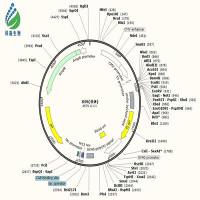Over the past two decades, the field of biosensors has been developing fast, portable, and convenient detection tools for various molecules of interest, both biological and environmental. Although much attention is paid to the transduction portion of the sensor, the actual bioreceptor that binds the ligand is equally critical. Tight, specific binding by the bioreceptor is required to detect low levels of the relevant ligand, and the bioreceptor must be stable enough to survive immobilization, storage, and in ideal cases, regeneration on the biosensing device. Often, naturally-occurring bioreceptors or antibodies that are specific for a ligand either express affinities that may be too low to detect useful levels, or the proteins are too unstable to be used and reused as a biosensor. Further engineering of these receptors can improve their utility. Here, we describe in detail the use of yeast surface display techniques to carry out directed evolution of bioreceptors to increase both the stability of the molecules and their affinity for the ligands. This powerful technique has enabled the production of stabilized, single-chain antibodies, T cell receptors, and other binding molecules that exhibit affinity increases for their ligands of up to 1 million-fold and expression of stable molecules in E. coli.






